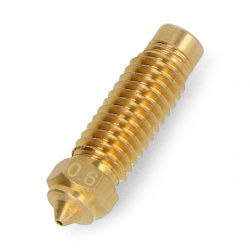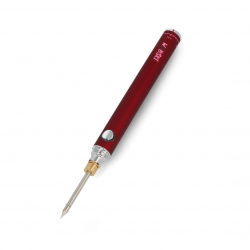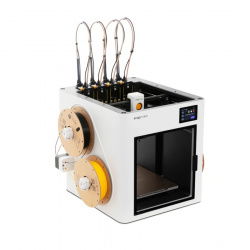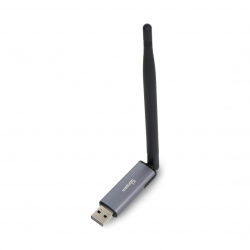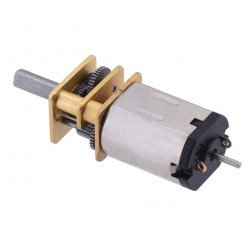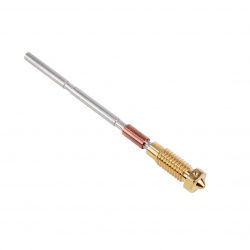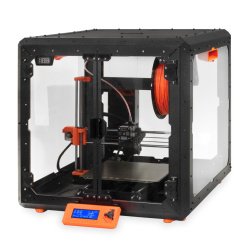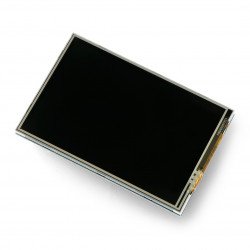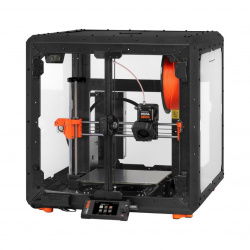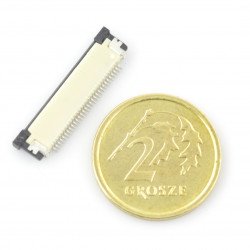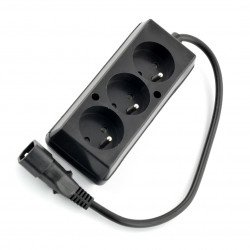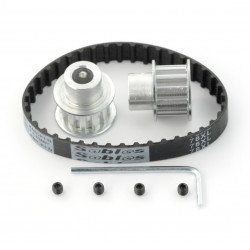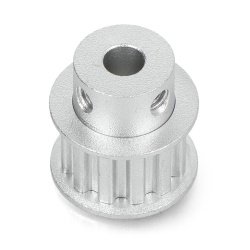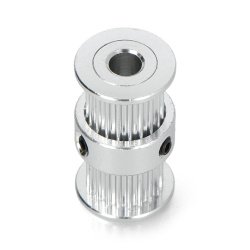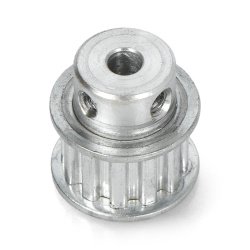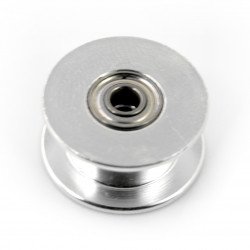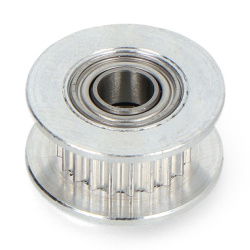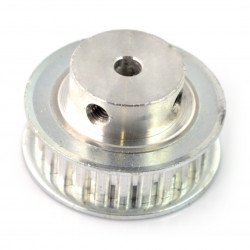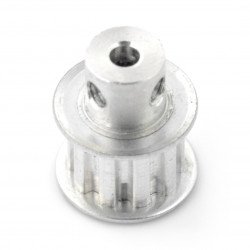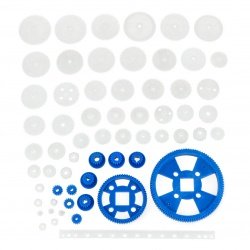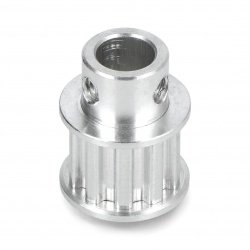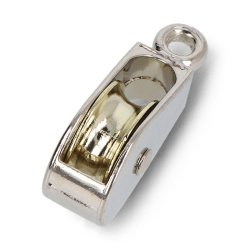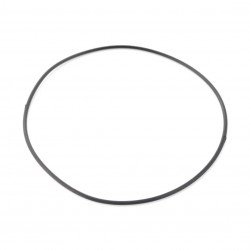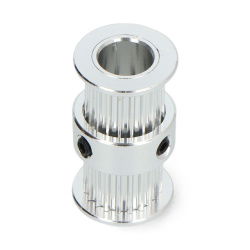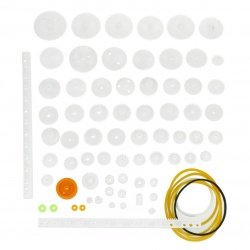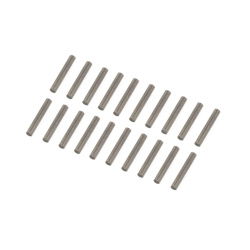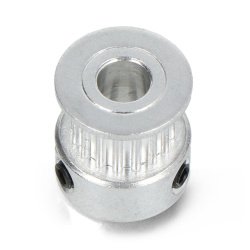Dimensional parameters of gears
The basic parameter of gears that you should pay attention to when selecting them for your project is the number of teeth arranged on the outer circumference of the wheel. The height of the tooth foot is also important. For gears with large teeth, it is easy to manually calculate their gear ratio due to the small number of teeth. However, in the case of a gear (enabling power transmission) with a large number of small teeth, selection for the project may prove problematic and it is best to rely on the documentation provided by the manufacturer. Each gear should be carefully described.
Gear parameters – continued
Another parameter determining the geometry of gears is their module , i.e. the size of a single tooth determined on the basis of the distance between the centers of identical tooth sides. The larger the module, the larger the teeth of the wheel. When selecting gears, their pitch diameter and outer diameter should also be taken into account.
The pitch diameter is determined by the straight line passing through the centers of the distance between the teeth on the circumference of the gear, and the outer diameter is determined by the straight line connecting the tips of the teeth placed opposite each other on the base circle of the gear.
The material should also be selected appropriately - we can choose between plastic and aluminum gears.
Operating parameters of gears
The performance of a gear transmission is determined by its operating parameters, i.e. torque, rotational speed and power. Torque represents the force applied to an arm of a specific length - for gears, torque depends on the diameter of the wheels between which it is transmitted. Additionally, we encourage you to check out the entire assortment of the assembly elements category, where you can find not only gears that mesh together, but also propellers , robot chassis , engine mounts , spacers , engine adapters and much more.
Gears – additional technical information
The rotational speed of the gear set determines the number of revolutions performed by the output wheel of the system in a specific time interval.
When a wheel with a larger diameter drives a wheel with a smaller diameter, then for one revolution of the larger wheel, the smaller wheel will make a greater number of revolutions in the same time interval - this solution is a gear that increases revolutions (higher wheel speed).
However, the smaller wheel driving the larger wheel is a system that allows the reduction of rotational speed. This solution is used when the design requires a lower speed on the gears.
Gear wheel – what else is worth knowing about it?
The size ratio of two mating wheels is linearly proportional to the changes in speed and torque between them. In turn, the power of the gear system determines the maximum amount of energy that the system can provide for a unit time (during the rotation of the wheels).
The power value of the gear is also significantly influenced by the power at the output of the gear driving system, e.g. on the engine shaft, while the power at the gear output remains constant, regardless of the dimensions of the gears constituting the gear.
Gears can be part of a gear ring, which has a higher load capacity compared to standard gears. The gear ring is usually composed of identical elements.






























































































































































































































































































































